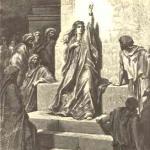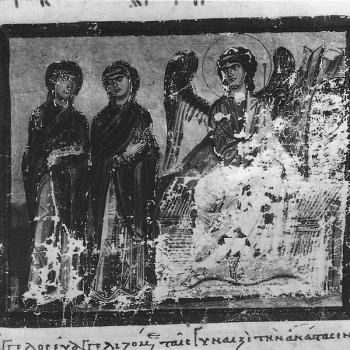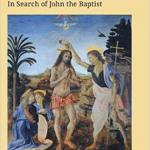Every generation or so, rumors and accusations alike that some major figure is the Antichrist start to circulate. Books and blogs are written, sermons are preached, theories are devised, and as quickly as these ideas surface, they fall dormant…until they rise again. Given current events in the United States, many have revived discussion on the antichrist again.
As much as we speak about the antichrist, who (or what) is it? What do we know about this mysterious figure, and what more can we learn?

The word literally means “against the Anointed One”
The Greek word for antichrist literally means, “against the anointed one.” It’s considered an adversary of the Messiah, one who would be the counter of Christ. There are a number of colorful theories about the antichrist’s role in the world, including the idea that he would be the seed of Satan. In earlier times, some believed he’d be born of a prostitute who appeared to be a virgin. Focusing on the idea of deception, the antichrist is seen as the total opposite of everything Christ was and is.
As a secondary point, the idea of antichrist means such a figure also opposes those who are anointed by Christ to do His work. The antichrist fights the church – the members of Christ’s body on earth – as they represent His values in this world.
The casual use of the word
Have you ever wondered why the term “antichrist” is so casually placed in the New Testament? It’s only found four times, exclusively in the works of 1 and 2 John. The term is never defined, although the concept is clarified some in his writings (we will explore more about this later). If this figure was so monumental, why isn’t he clearly marked and defined somewhere in Scripture?
It’s not uncommon for terms to go undefined in Scripture. For example, the word “marriage” is never defined. It was so culturally practiced, everyone understood what it was within their time and place. The same is true with the idea of the antichrist. It was a legendary idea, one that described enemies of the early church (especially the Roman government). Governmental persecution and oppression were so common, every wayward leader had the potential to fit the bill as an “antichrist.”
The antichrist is not mentioned in Revelation
In studying Revelation, most are surprised to learn there is no “antichrist” in Revelation. The imagery of Revelation follows a slightly different course, and speaks of two great beasts. The first beast rises up from the sea (Revelation 13:1-10) while the second beast comes out of the earth (Revelation 13:11-18). Much as a few chapters earlier we learn of two witnesses for God, these two are the counterpart to those, representing the agency of the devil. In the most immediate sense, the “mark of the beast” was representative of the Roman government under Nero, thus associating the two beasts of Revelation to somehow have a government connection. Many, therefore, associate the idea of the antichrist and a false prophet to these representations. The term “antichrist,” however, is never used in the text to identify either of them.
The idea of the antichrist comes from the prophets, the apocrypha…and paganism?
To say the idea of the antichrist isn’t Biblical is neither correct nor incorrect at the same time. It’s an idea, a legendary figure, if you will, pieced together from a few sources. The first, and most Biblical, is that of the Old Testament prophets. The Old Testament prophets spoke of a coming day when the earth will divide into the righteous and unrighteous (the believing and unbelieving). Along with this division comes a great battle, whereby God Himself shall protect His righteous ones from the unbelieving wicked. The idea that the Messiah would be the literal embodiment of God on earth finds its roots in prophetic understandings, thus leading people to see the image of God as the Messiah. It was understood that if the Messiah was there to represent God, surely there must be a wicked counterpart, one to represent Satan in the same fashion.
The imagery we have of the antichrist doesn’t come from the Bible, however. The mythical, legendary characteristics resemble evil and powerful deities found in nations that influenced believers around the time of Christ: Persian, Babylonian (specifically Tiamat and Marduk), and Greek. With the rise of the Roman Empire, the image of the antichrist was often associated with its emperors. While Jewish imagery moved away from the idea of an antichrist, Christianity embraced it. There are references to an antichrist in early Christian apocryphal literature, including the Christian Sibyllines and the Apocalypse of Elijah.
There isn’t one antichrist
Modern understandings of the antichrist tend to depict a singular, wicked figure who shall assume power and dominate the entire world. There are a few reasons why this hypothetical imagery is problematic, especially nowadays. For one, the likelihood that a singular political figure could dominate every existing nation isn’t likely. Citizens of singular nations can’t all agree on a common course of action, let alone looking to one individual who may not even belong to their nation. Countries today are divided by political ideologies, far more than they were in Biblical times. Gone are the days of emperors, empires, and expanding territory. So, given these facts, how do we understand the antichrist?
1 John 2:18-19 provides as much of a definition of “antichrist” as we have:
Dear children, this is the last hour; and as you have heard that the antichrist is coming, even now many antichrists have come. This is how we know it is the last hour. They went out from us, but they did not really belong to us. For if they had belonged to us, they would have remained with us; but their going showed that none of them belonged to us. (NIV)
From this passage, we know:
- There isn’t just one antichrist, but many
- The antichrist isn’t really a single person, per se, but a description of a role or office one assumes for the enemy
- We know we are in the period before Jesus returns because there are so many antichrists out there
- An antichrist starts out as a Christian (or at least appears to be one), but isn’t one; they are deceivers
- They leave the faith
The idea of the antichrist has changed over time
Throughout history, different Christian figures have taught the antichrist to be different people. Historical antichrist figures include religious leaders, Middle Eastern dictators, Communist leaders, church authorities, Democrats, Republicans, and beyond. Some fit the definition and some do not, but this proves a few things about the idea of antichrist. The first is that it’s adaptable to time and space, meaning the idea of such does fit a number of figures (proving its plurality). The second is that looking for our conventional idea of the antichrist will turn up short, every time. If we try too hard to make a figure we dislike fit the bill, they most likely will not meet the criteria. At some point, someone will associate the criteria elsewhere, and so on and so forth, until the return of Christ.
Figures suspected of being the antichrist
There are obvious historical associations with the antichrist, as well as uncommon ones. It’s not surprising to learn that Hitler, Mussolini, Stalin, and Napoleon are on the list. Would you be surprised to learn that through much of Protestant history, the office of the papacy has been associated with the antichrist? This includes the specific individuals who have been pope since the time of Martin Luther. Other governmental leaders on the list include Saddam Hussein, John F. Kennedy, Ronald Regan, Hillary Clinton, Barak Obama, and most recently, Donald Trump. Even pop culture figures, such as Bill Gates, Madonna, Lady Gaga, and Elon Musk have the accusation of antichrist hanging over their foreheads.
I’m not going to speculate as to whether or not these people fit the criteria, because most of them do not. It does prove, however, that how we judge antichrist changes with current events. Making the accusation should come with caution. Rather than randomly assigning it here and there, we should examine criteria to see if it fits.
Is the antichrist real?
I believe there is a very real spirit at work in the world that’s against the things of Christ. That being said, the Bible itself states there wouldn’t be just one antichrist, but many. Looking for one lone figure to serve this role distracts from the many who rise up and fulfill this prophecy throughout the ages. This puts to rest the notion that an all-powerful apocalyptic figure will come and take over the world. Whether we consider the beasts of Revelation to represent governments or ideas or think something mythological is to come, it’s important we don’t lose sight of the end of the story. No matter who rises up against God, God is still greater than them. Our sights should be set on Christ, not on legendary figures who rise and fall.














